Qutub Minar: Icon of India's Architectural Heritage (Part-01)
The 73 feet (240 feet) high building which has received the title of being included in the wonders of the world...its name is Qutub Minar. The work of this minaret started in the year 1192 and it is the single tallest minaret in the world made of red brick. This Qutub Minar is located in the capital of India in the northern direction. I have been watching this tower ever since I regained consciousness. During school time, my teachers used to take us to see this tower about which we had only read about in books.
This tower also has the title of UNESCO World Heritage Site. Historians say the main reason for building this minaret is “This minaret was built to commemorate the victory of the Mughals over the Hindu kings in 1192”. In 1192, when Mohammad Gauri defeated Rajput king Prithviraj Chauhan and hoisted his flag in Delhi.
 Graphic created in adobe photoshop
Graphic created in adobe photoshop
At that time India was under the rule of Mughals, then in 1192 the work of this minaret was started by Qutub-ud-din Aibak. Aibak was the king of Delhi at that time. After the death of Qutub-ud-din Aibak, Iltutmish played an important role in completing the work of the minaret. This minaret is a unique example of Indian and Islamic architecture. Quranic verses are engraved on this minaret, each floor of the minaret is decorated with calligraphy. I don't know the story but each tower has its own story.
The information received from the internet is still not finished. According to information, the base diameter of this tower is 14.3 meters and at the top its diameter reduces to 2.7 meters. The minaret has 379 steps and each minaret has two doors. In 1369, the fourth floor was damaged by lightning, which was repaired by Delhi Sultan Firoz Shah Tughlaq. Before 1981, walking inside the Qutub Minar was open to the general public, before that one day there was a stampede among the public due to the lights going off in the minar, due to which 45 people died.
The foundation of this world-famous minaret, known as Qutub Minar, was laid by Qutbuddin Aibak of the Mamluk dynasty at the end of the twelfth century. Construction work on the first floor was interrupted after his death, and the remaining three floors were completed in matching materials and style by his successor Iltutmish, commonly known as Altamish, in A.D. 1230. In A.D.1368 the minaret was damaged by lightening. Later, Firoz Shah Tughlaq (A.D.1351-88) built the existing two floors made of marble in place of the top floor. Sikandar Lodi (A.D. 1489-1517) also made some repairs to the minaret in A.D. 1503, when it was again damaged by lightning.
“The diameter of the tower is 14.32 meters and approximately 2.75 meters at the base. With a top height of 72.5 meters and climbed by 379 steps, it is the tallest stone-tower in India and is a perfect example of a minaret that exists in any place, with its varied plan of three lower storeys, surmounted with stalactite pendentive brackets. The decorated balconies and the ornate strips of inscriptions on its facades add to its decorative effect.” This information is taken from a board installed near the Qutub Minar.
Before entering the tower you have to buy a ticket. You can get tickets both online and offline. Being an Indian, I got the ticket for Rs 40 ($0.40) and if you are a foreigner, you will have to spend Rs 600 ($7.23) for the ticket. No one except women can carry bags in the Minar premises. It is strictly prohibited to carry water bottles or food items inside. Whereas you can use mobile and you will have to pay extra money to take professional cameras. There are cloakrooms available for storing bags.
I was hungry, so after taking the ticket, the first thing I did was eat a patty which I got from the restaurant located next to the ticket counter. Well, if you are coming to visit Qutub Minar, then remember that nothing is available inside, there is no shop inside for food items. Therefore, it is better to worship the stomach from outside. After taking the ticket, I stand in the queue...today there was not a very long queue, otherwise there are many long queues here. After security check, I first go to Qutub Minar.
There are a lot of people in the tower complex. Some are reading the information written here by me and some are making dance videos. I was able to recognize Americans, Germans, Japanese and English among the tourists. When seen from a distance, it seems that the minaret can be filled in the arms, but the diameter of its base is so large that at least 30 people are required to fill it in the arms. The distance of the airport from here is only a few kilometers, hence I repeatedly saw airplanes flying from the top of the tower and sometimes from behind. It is believed that an airplane once hit the tower.
Below the minaret, there are information boards about the minaret and maps of the minaret complex are made on red stone. I try my best to understand these maps but do not achieve any success. Looking around, I can see very big buildings. The names of these buildings are as follows: Quwwat-ul-Islam Mosque, Alai Darwaza, Iron Pillar of Chandragupta II, Tomb of Iltutmish, Tomb of Imam Zamin, Tomb of Alauddin Khilji, Alai Minar, Smith Folly and Sanderson Sundial.
There are dark clouds in the sky today, it rained yesterday and it rained this morning too. I don't like rain that much because I have got wet many times while trekking...so much so that even my sleeping bag got wet due to which I could not sleep the whole night in the cold. There is water at some places in which beautiful reflection of buildings is being formed...looking at this scene I am missing my camera. I am scolding myself and saying, “I wish I had brought my camera, I would have taken so many beautiful photos”. Since there is no camera now, we will have to make do with the mobile camera only. My smartphone POCO F1 doesn't even click that bad photos. All the photos in today's post have been clicked by this phone.
The height of the minaret is so much that the mobile camera is not able to capture the minaret. I have to go away and click photos and then come back and look at the carvings engraved on the minaret. Through the windows, I am looking at the grass established in the premises and sometimes at the marble mausoleum. Looking at these ruined buildings, only one thought is wandering in the mind that if this complex had not been ruined, how beautiful it would have looked. I wish its old photos could be seen, I wish videos were made of this place in old times.
If history is to be believed, there was never any attack on Qutub Minar. This tower complex collapsed because lightning struck here in 1326 and 1368. About 70% of the buildings here were damaged due to lightning. After which it was repaired by Muhammad-bin-Tughlaq and Firoz Shah Tughlaq. If we talk about the thickness of the walls of the buildings, these walls are about 20 feet thick. In those times, even if someone fired a cannon ball, there would be no damage to these walls.
Wandering through the ruins, looking at the huge broken doors, I get lost in history. Here the buildings are reflected in the water. The airplanes flying in the sky are seen swimming like fish in water. The government has preserved the entire complex very well. Roads have been built here, grass has been planted on which different types of flowers bloom and arrangements for guides have also been made for the tourists. If there was sunshine, I would have liked to rest for some time in these grasslands, but today there was no sunshine and on top of that, the wind was also very cold, so I put this plan aside and moved towards the next building.
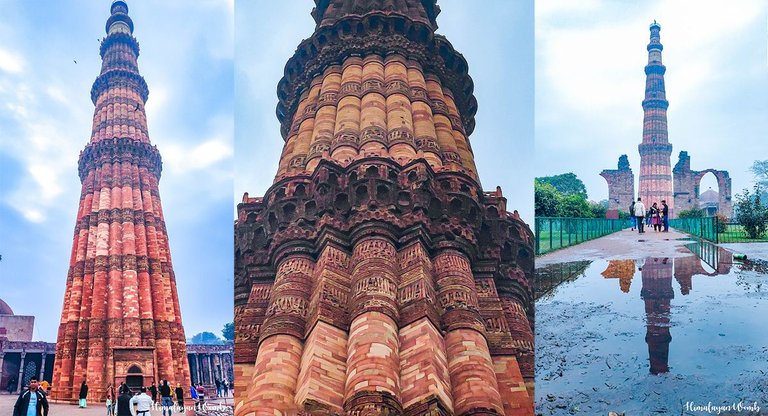
Disclaimer: This post is originally written in Hindi and I have used Google Translator to tranlate the Hindi text in English. All the photos have been clicked by me from Mobile and edited in Lightroom/photoshop.
[//]:# (!pinmapple 28.52436 lat 77.18550 long Qutub Minar: Icon of India's Architectural Heritage (Part01) d3scr)

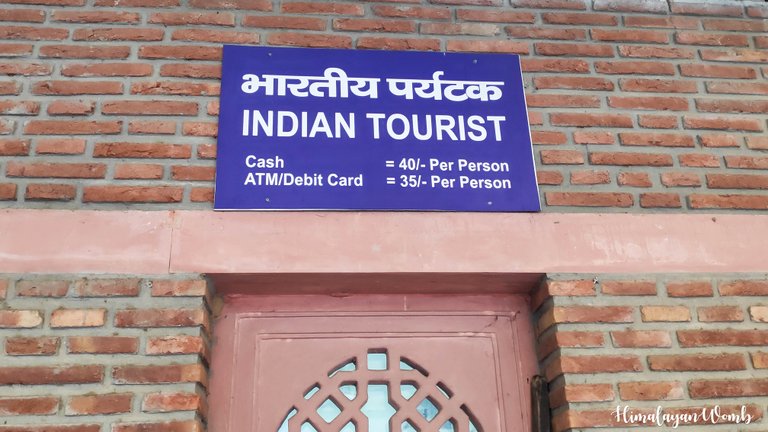
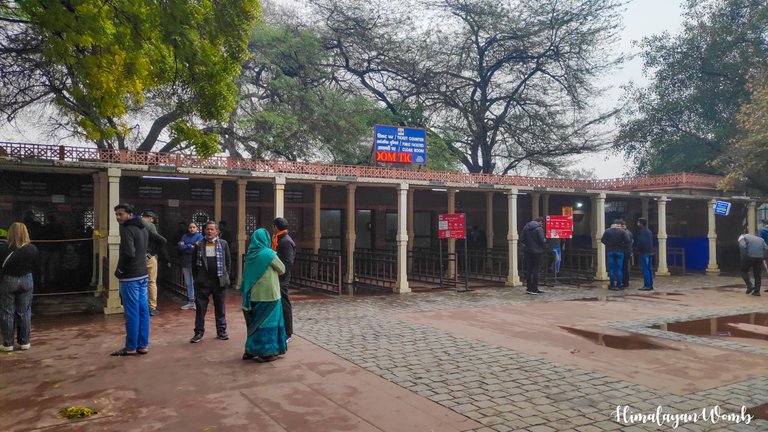
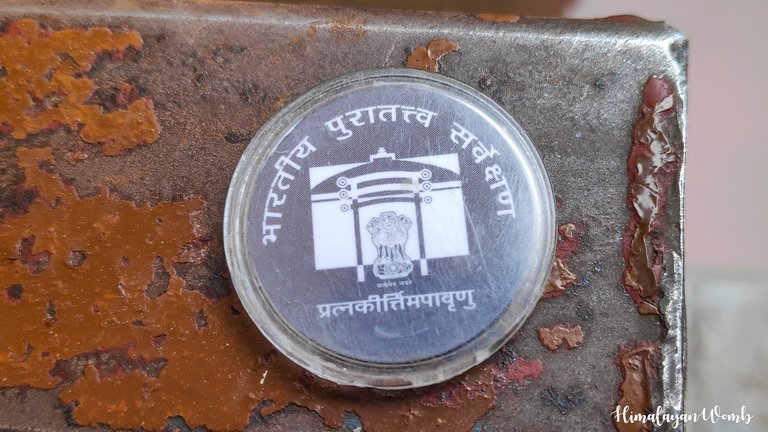
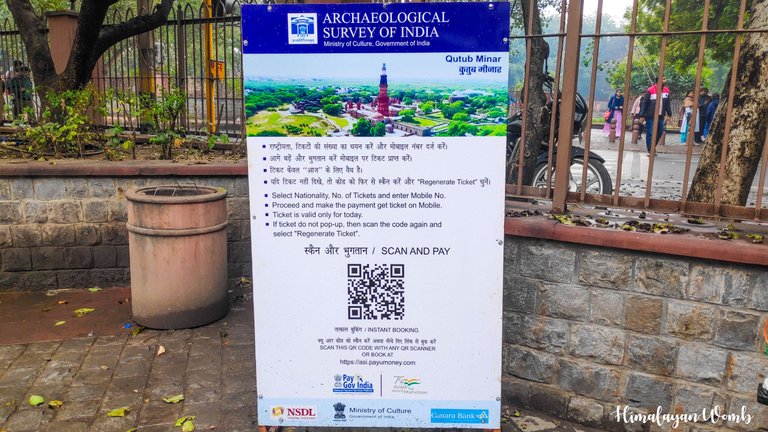
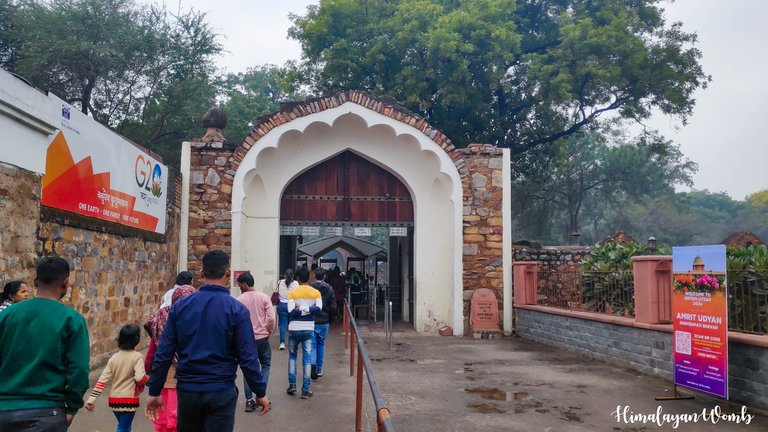
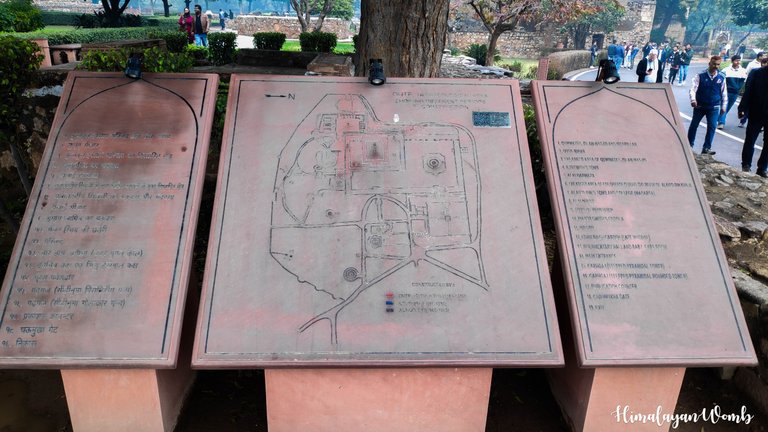
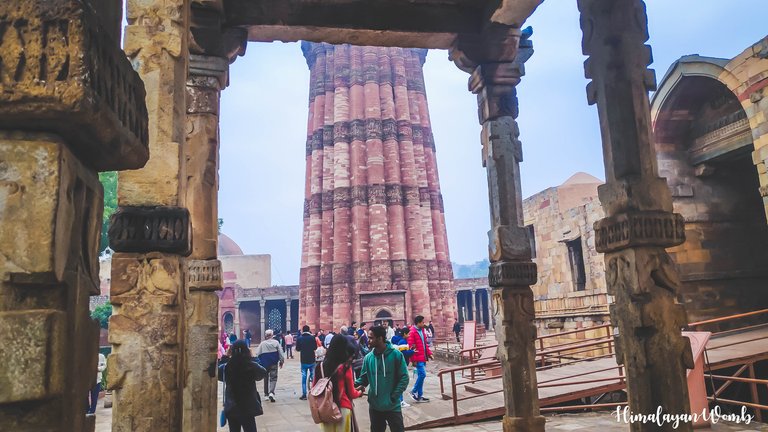
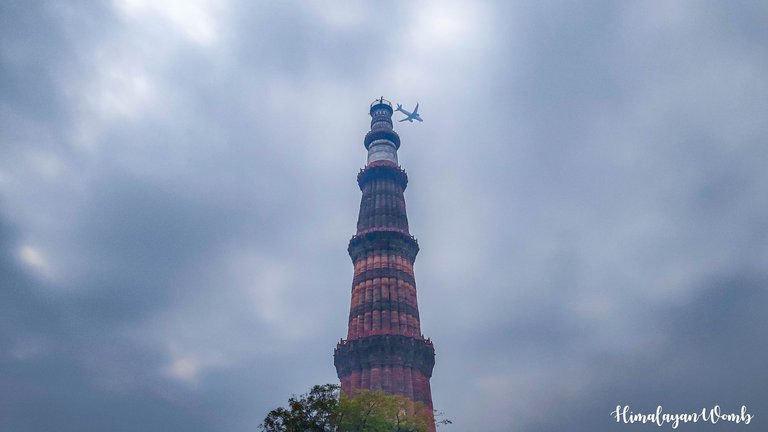
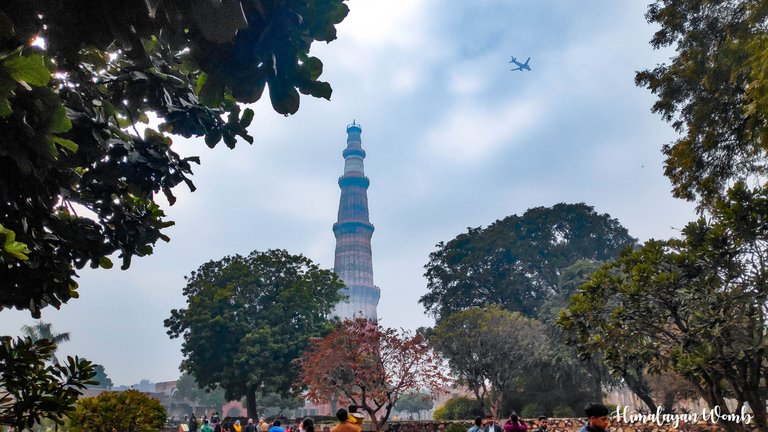
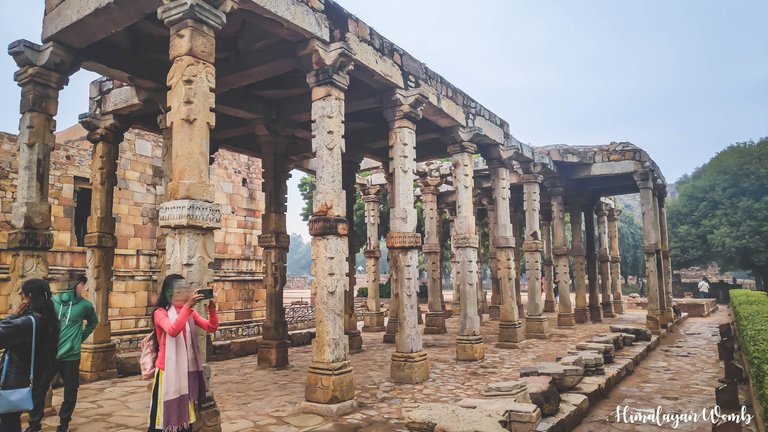
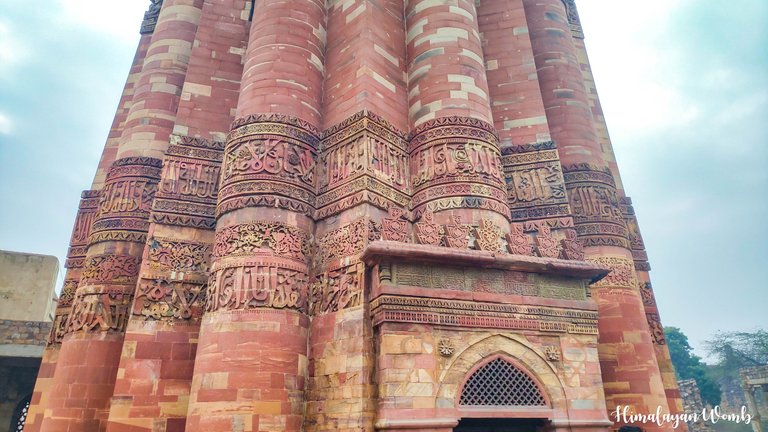
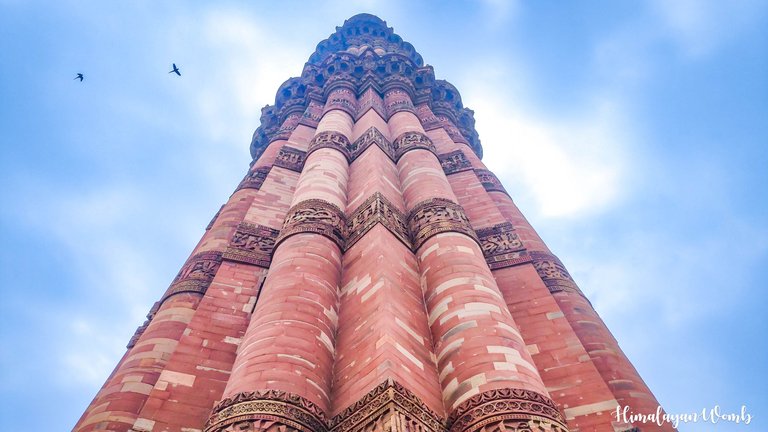
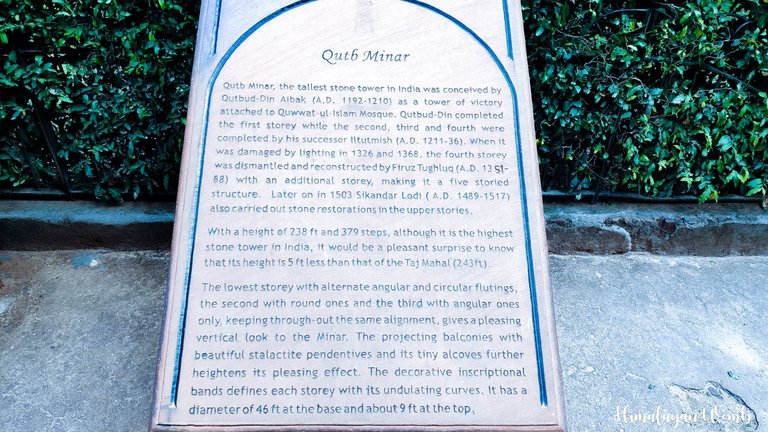
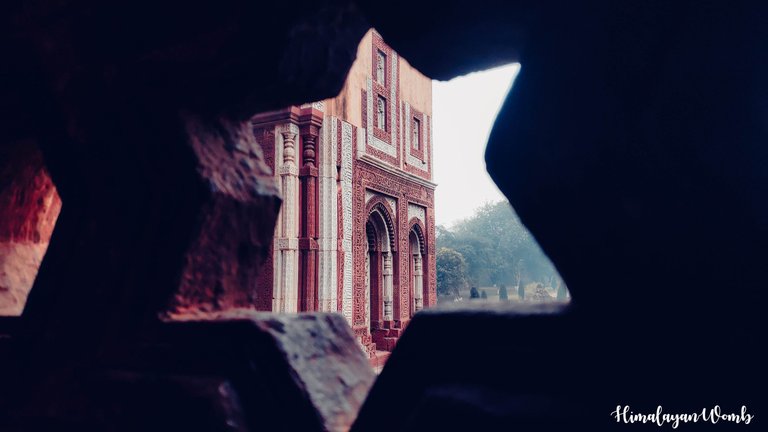
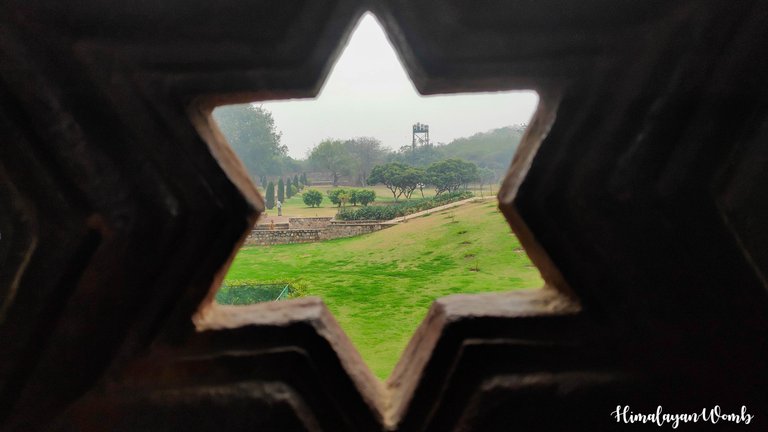
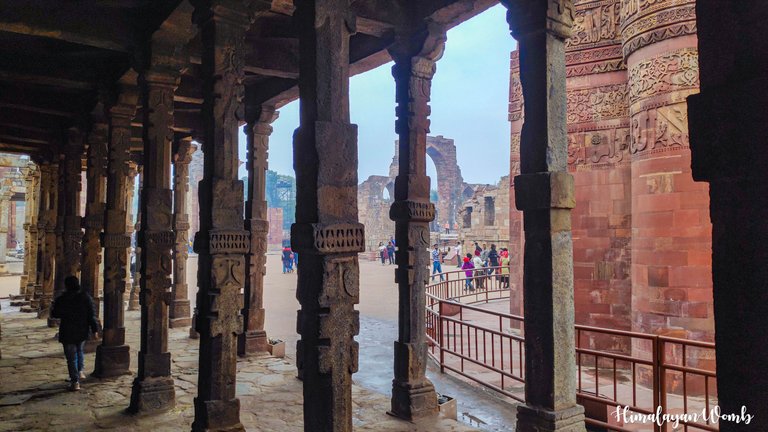
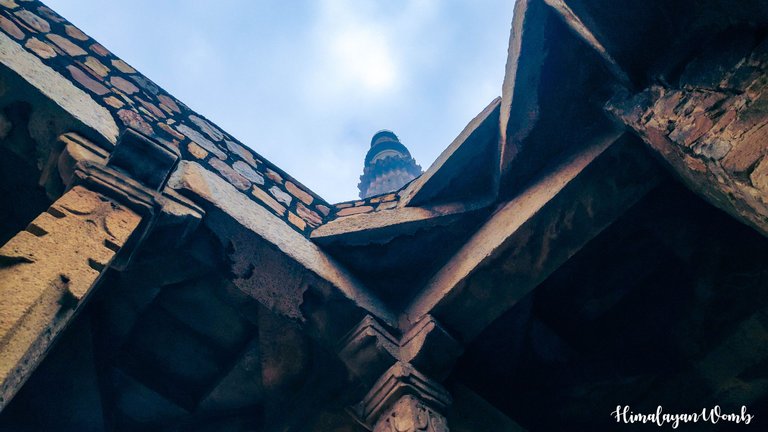
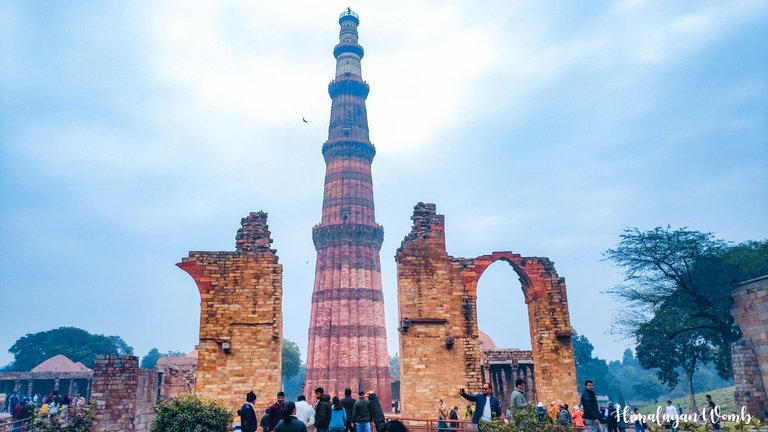
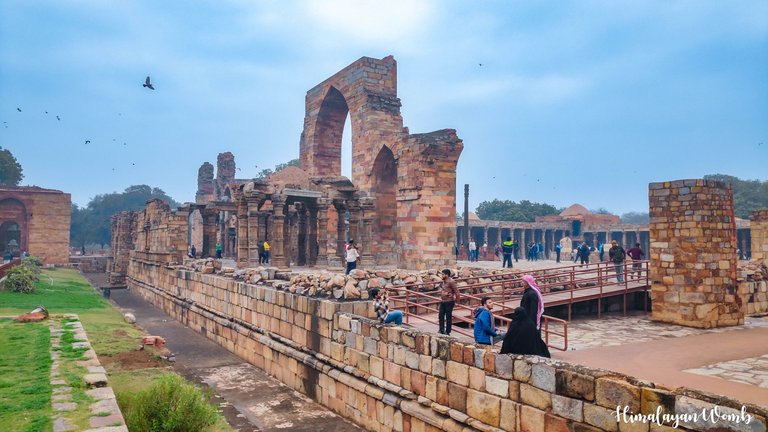
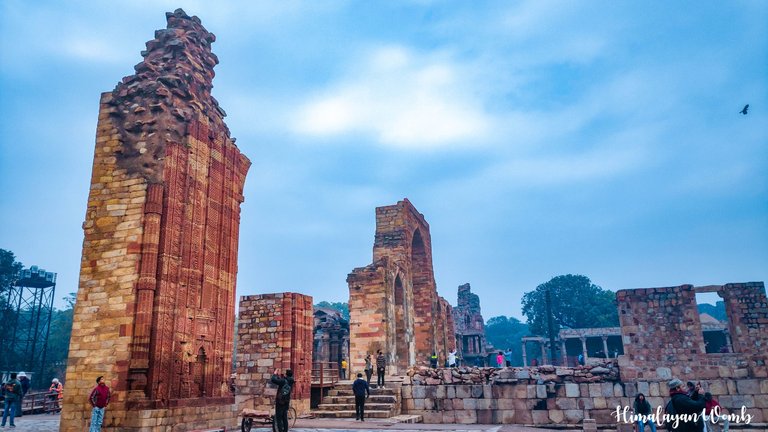
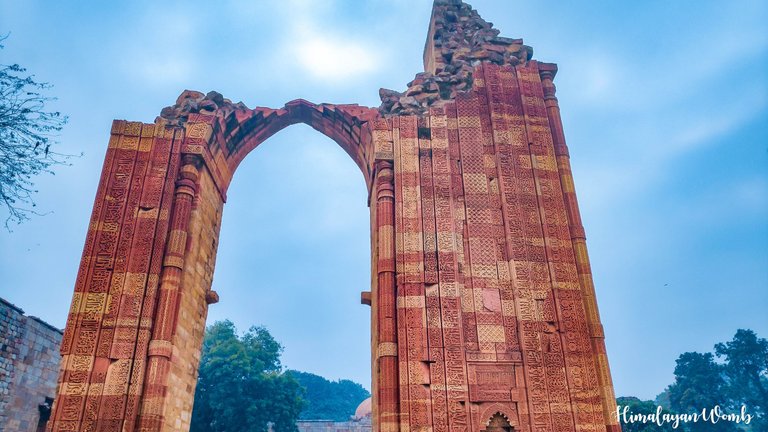
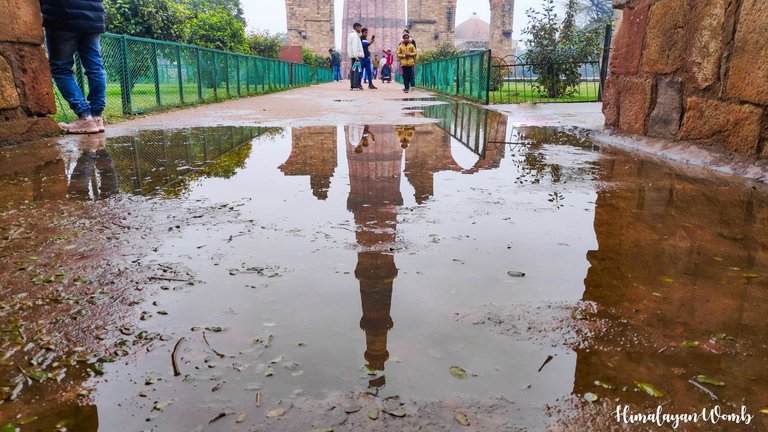
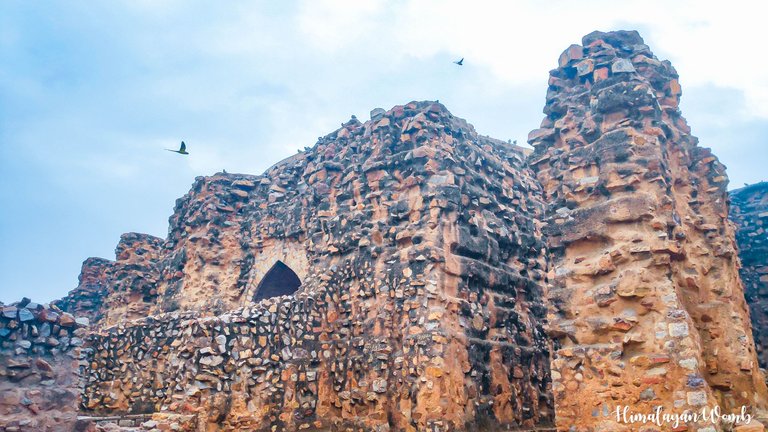
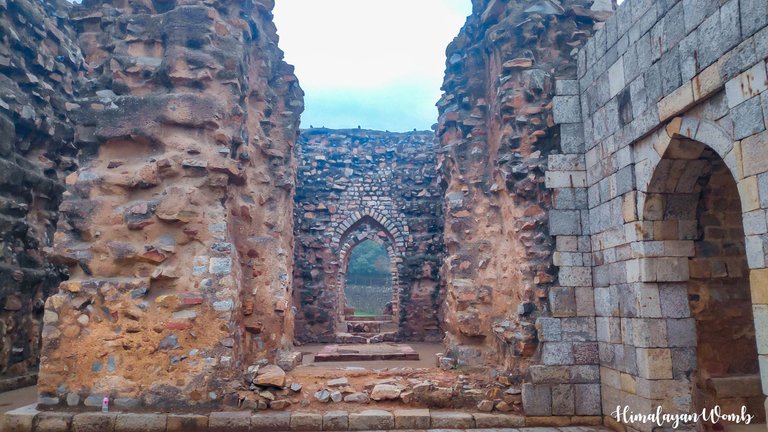
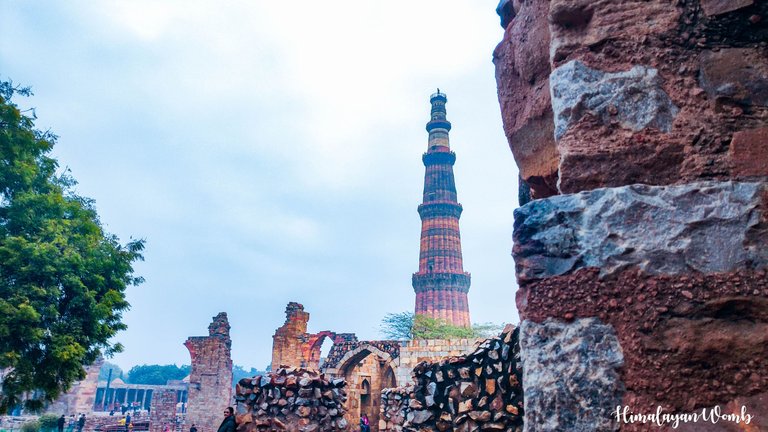
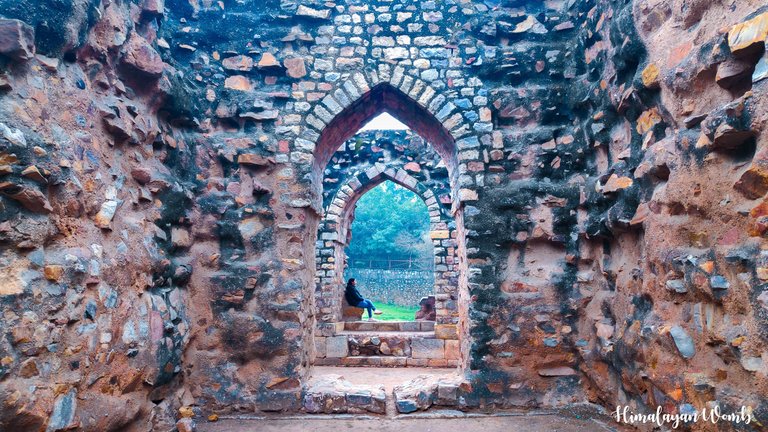
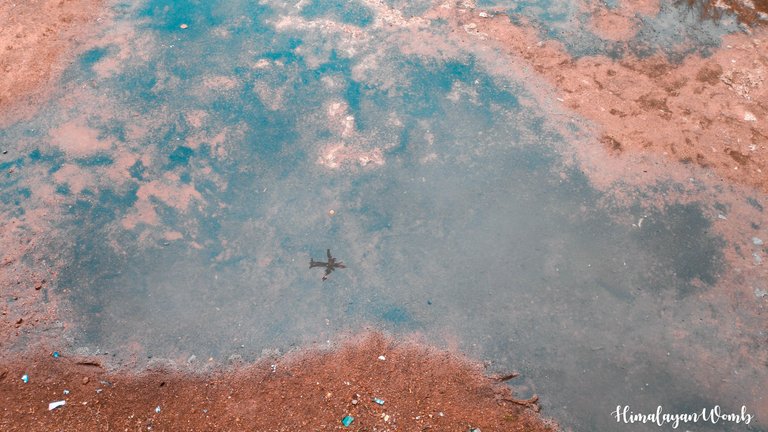
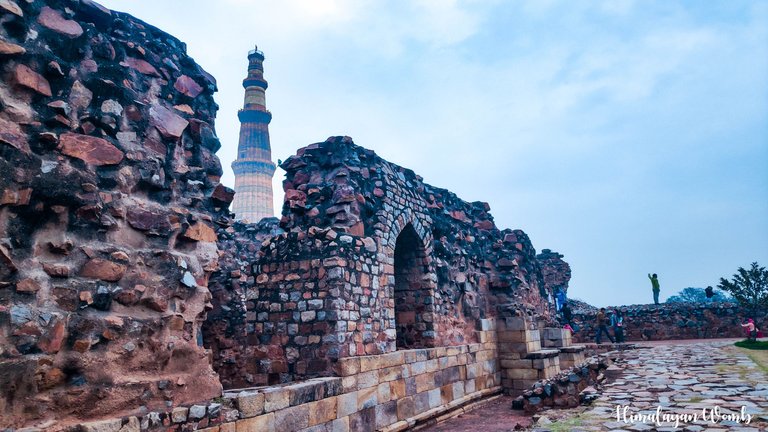
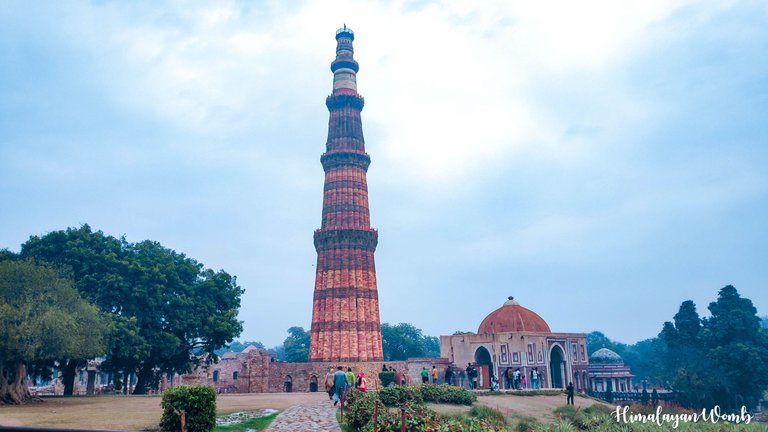
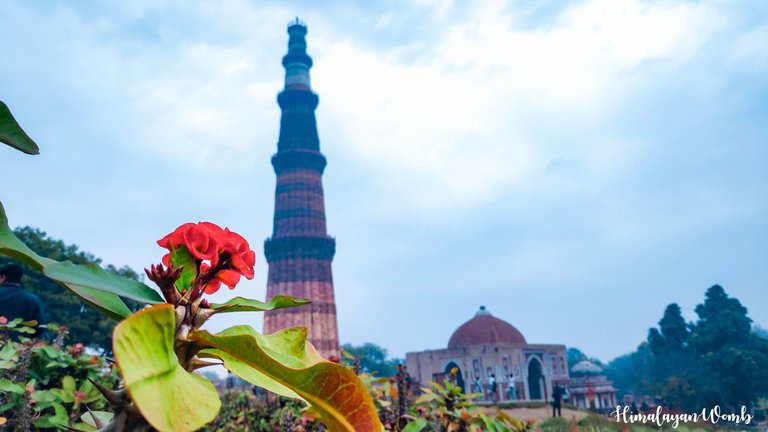
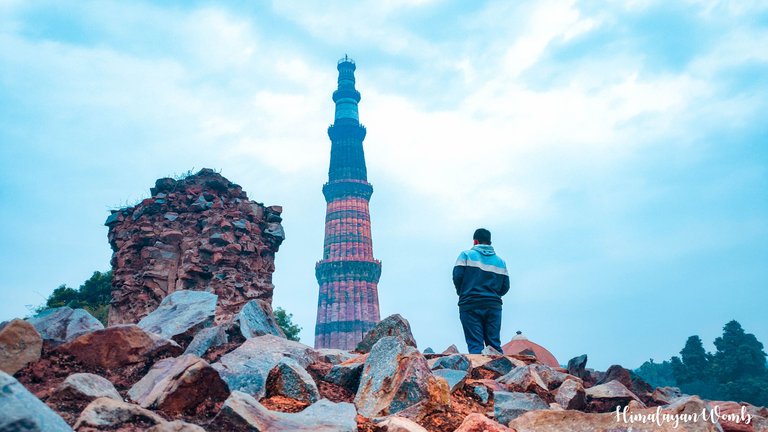
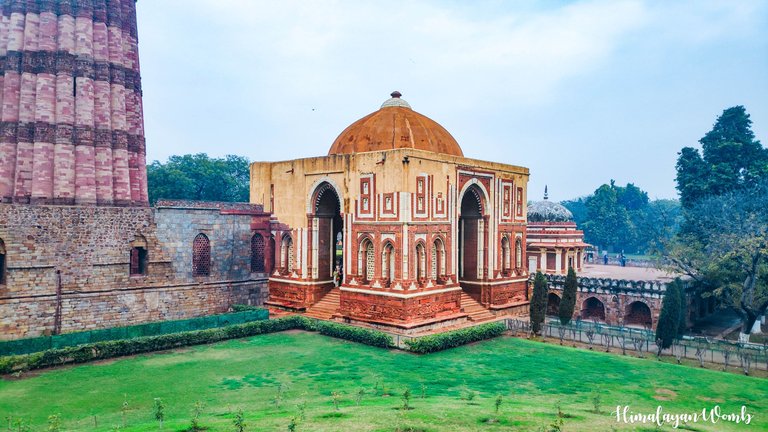
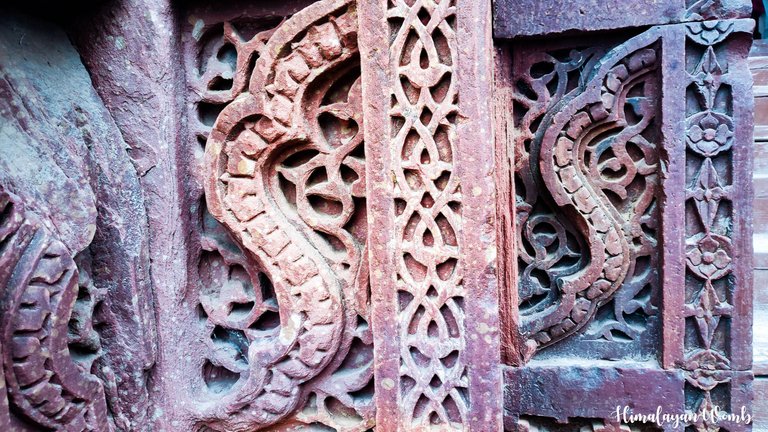
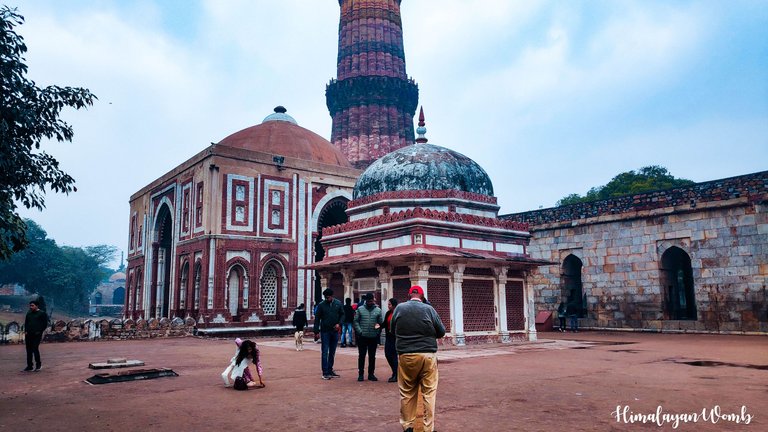
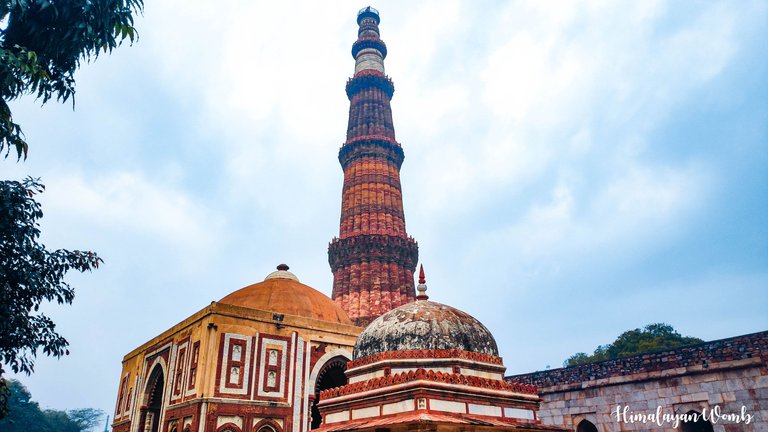
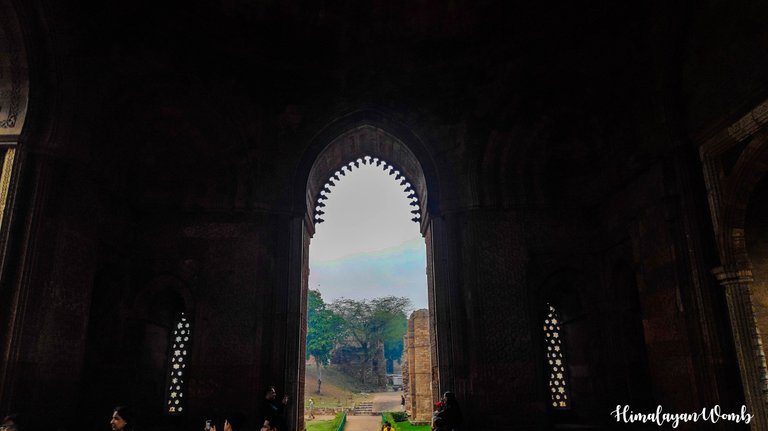
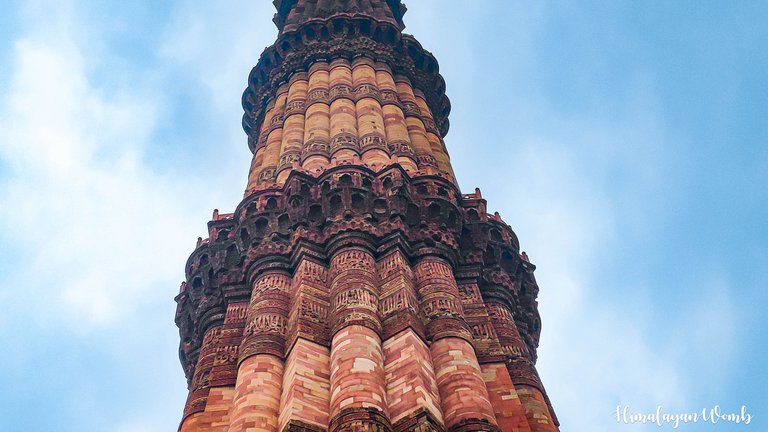
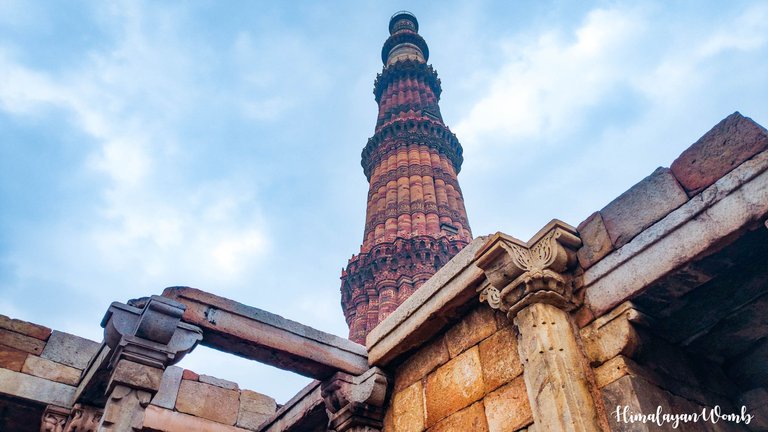
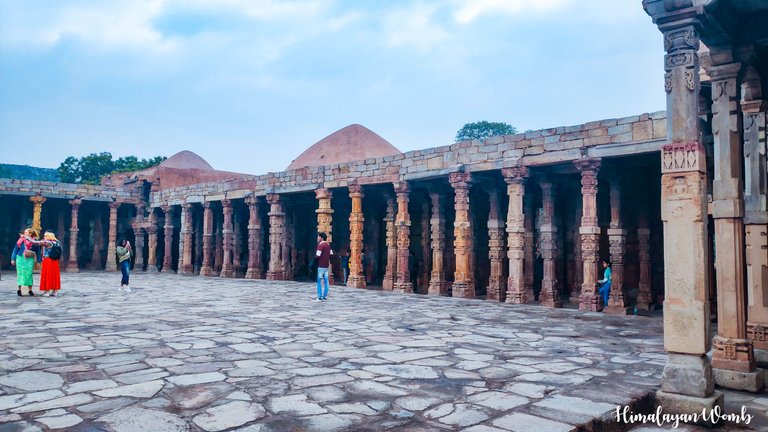
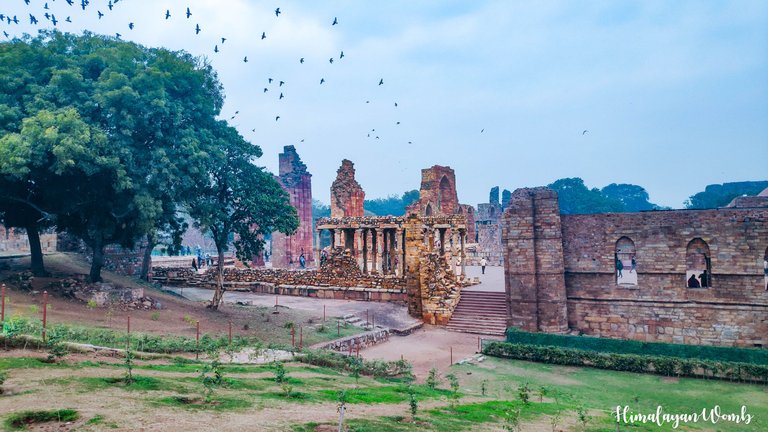

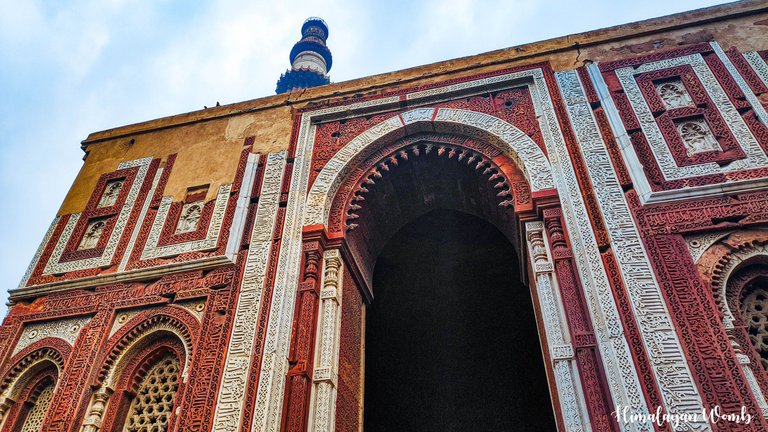
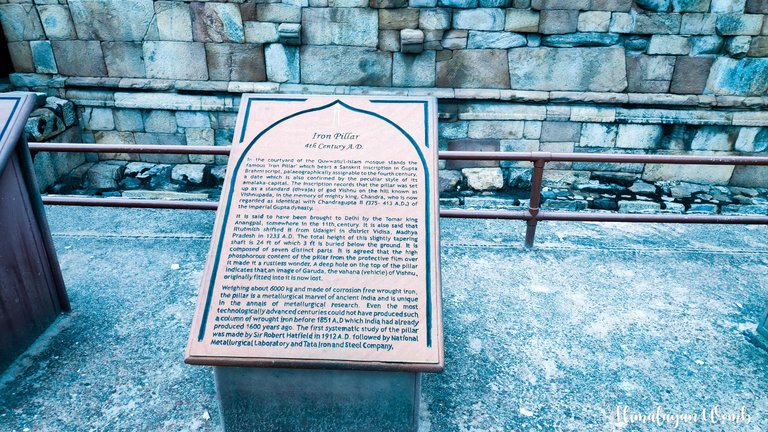
Wow! Beautiful photography 🤩
@sagarkothari88 vote 15%
| Hive Curators Community | Join Discord | Support Witness | Follow Curation Trail |
Keep Up the good work on Hive ♦️